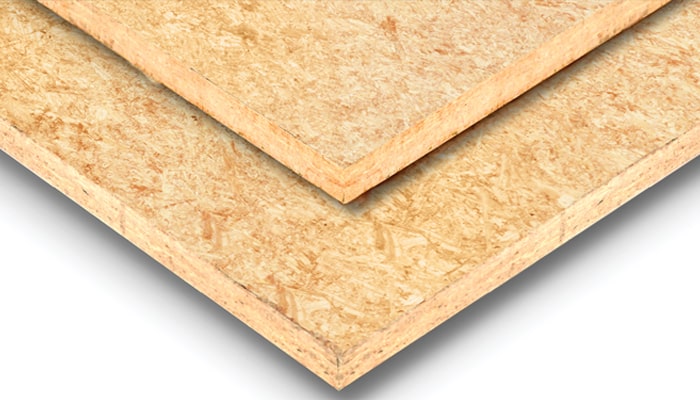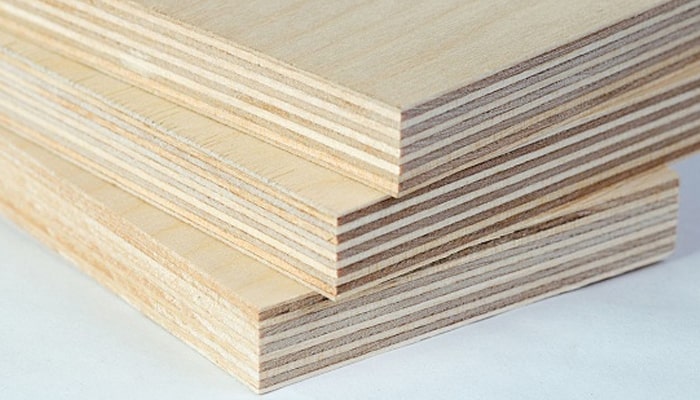Interior design trends began to shift towards modernity and favor friendly materials. In particular, many families are still wondering whether to choose Drymax Flooring or Plywood for their floors.
So do you know what Drymax Flooring and Plywood are and how are they different? The answer will be answered by A1 Plywood right below. Don’t miss it!
1. Concept
1.1. What is Drymax Flooring?
Drymax is the driest fiber one scientific method used to measure the wetness/dryness of fiber is Moisture Absorption/Regain %. As you can see from the chart on the left, dry max fibers are the driest of all fibers.
Drymax flooring is not only the most moisture-resistant OSB sub-floor Georgia-Pacific manufactures but it’s also designed to help prevent costly and time-consuming joint sanding. No wonder Drymax carries a 500-day no-sand warranty.
Drymax is the most moisture-resistant OSB subfloor Georgia-Pacific manufactures and can help prevent costly and time-consuming joint sanding.
OSB is strong and water-resistant. Every single fiber or piece of wood in an OSB is saturated with a cocktail of resins designed to provide superior strength and waterproofing to the finished product.

1.2. What is Plywood?
Plywood is one of the most widely recognized multi-purpose engineered wood-based panel products used in Canadian construction projects. Plywood binds resin and wood fiber sheets to form a composite material sold in panels.
A typical plywood panel has face veneers of a higher grade than the core veneers. The function of the core layers is to increase the separation between the outer layers where the bending stresses are highest, improving resistance to bending forces.
All plywood bind resin and wood fiber sheets (cellulose cells are long, strong and thin) to form a composite material.
This alternation of the grain is called cross-graining and has several important benefits: it reduces the tendency of wood to split when nailed at the edges; it reduces expansion and shrinkage, providing improved dimensional stability; and it makes the strength of the panel consistent across all directions.
There is usually an odd number of plies so that the sheet is balanced – this reduces warping. Because plywood is bonded with grains running against one another and with an odd number of composite parts, it has high stiffness perpendicular to the grain direction of the surface ply.

2. Difference between Drymax Flooring and Plywood
2.1. Structural Integrity
Drymax flooring is considered more structurally consistent than plywood. Since a sheet of plywood consists of several large veneers of wood, it’s susceptible to instances of knots and other imperfections (which, if aligned, could create slightly softer spots throughout the material).
Meanwhile, OSB compacts as many as 50 layers of strands into a single sheet the same thickness as that plywood, ensuring a much denser—and heavier—product throughout.
2.2. Durability when cutting
Drymax Flooring is stronger than plywood in shear. Shear values, through its thickness, are about 2 times greater than plywood.
This is one of the reasons Drymax flooring is used for webs of wooden I-joists. However, nail-holding ability controls performance in shear wall applications.
2.3. Moisture Resistance
When a roofless, partially built structure takes on water, the plywood or drymax flooring used for floor decking can absorb water, swell, delaminate, and require sanding or replacement before finish flooring can be installed
Allowing drymax flooring to get wet is not a wonderful idea but it’s done all the time. Most of the time there is very little harm and the material doesn’t lose strength or any of its integrity. OSB that does get wet will tend to swell and delaminate first at the edges of the boards.
Drymax flooring has a bad reputation for its frequent swelling and weakening after being exposed to moisture. But plywood engineered floor panels are made to withstand the elements – guaranteed.
Drymax flooring absorbs less moisture, but plywood dries out faster and more completely. How the subfloor materials react to water matters during both an open-air construction phase of a house as well as homeownership when a leak or flood might compromise the subfloor.
Slower absorption of moisture is ideal for throwing a tarp out over an unprotected subfloor or catching a leak before real damage. But drymax flooring also takes a longer time to dry out, giving the trapped moisture more time to degrade the material than a quick-drying plywood subfloor.
Though both are examples of laminated wood (meaning that each consists of thin sheets of wood that have joined with glue and compressed into a larger, rigid sheet), water damage is more likely to cause plywood’s glue to fail and its layers to bubble.
This swelling effect can disappear when the plywood dries completely without impacting its structural integrity. Drymax flooring’s biggest weakness is at its edges, which will remain swollen even after the board has dried.
In fact, due to the problems that edge swelling creates underneath a finished floor, a couple of national ceramic tile associations have discouraged the use of drymax flooring as a subfloor or underlayment below a tile floor.
2.4. Cost
Drymax flooring is cheaper than plywood by about $3 to $5 per panel. For a typical 2,400 sq. ft. home, Drymax flooring is about $700 less expensive compared with plywood if used as the subfloor, sheathing, and roof decking.
Drymax flooring generally costs less than plywood. Sure, the cost of any wood product will fluctuate by region and supply, but this cost comparison generally holds water.
It’s the reason a good number of high-volume builders had turned to drymax flooring. The cost of plywood will vary depending on wood species, a factor that can also affect performance.
For either of these materials, enhanced versions will cost more, but the savings come in time and materials.
The enhanced plywood or drymax flooring installation should survive exposure to moisture, meaning builders likely won’t need to install a partial replacement or second subfloor in order to install finish flooring.
2.5. Can be used outside?
Drymax flooring is far superior to particle board for exterior use. Even the old type drymax flooring used as a substitute for plywood is decent in exterior applications, although it will absorb water if exposed.
3. A1 Plywood – Prestigious and quality Plywood factory
A1 Plywood is committed to the prestige and quality of products, ensuring that Plywood panels are always delivered to customers according to requirements and designs.
We own a direct furniture factory in Vietnam, with a team of skilled carpenters; each product is made carefully from the stage of choosing boards to construction and installation.
The factory accepts orders to produce Plywood boards based on the correct sizes and measurements as required, and delivery on time.
The above is the differences between Drymax Flooring and Plywood, based on it customers can choose the suitable wood.
Related keywords: drymax plywood, water resistant osb subfloor, waterproof osb subfloor, drymax flooring, water resistant plywood subfloor, water resistant subfloor, moisture resistant subfloor, water resistant osb, drymax subfloor waterproof, waterproof osb, sanding osb, osb floor decking, osb subfloor, osb flooring, drymax trailer flooring, plexcore flooring, menards advantech, menards 3 4 osb
